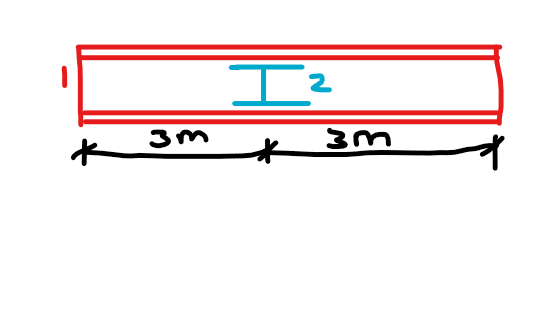BendingMoment123
Structural
Hey guys
So for example, if I have a 6m I-beam (beam 1) with a depth of 200mm (not including the flange thickness here) and I connect an adjacent beam (beam 2) with a full depth of 175mm to the center of the web of beam 1 at mid span, how effective would beam 2 be in reducing the laterally unsupported length of the I-beam?
Thanks
So for example, if I have a 6m I-beam (beam 1) with a depth of 200mm (not including the flange thickness here) and I connect an adjacent beam (beam 2) with a full depth of 175mm to the center of the web of beam 1 at mid span, how effective would beam 2 be in reducing the laterally unsupported length of the I-beam?
Thanks

